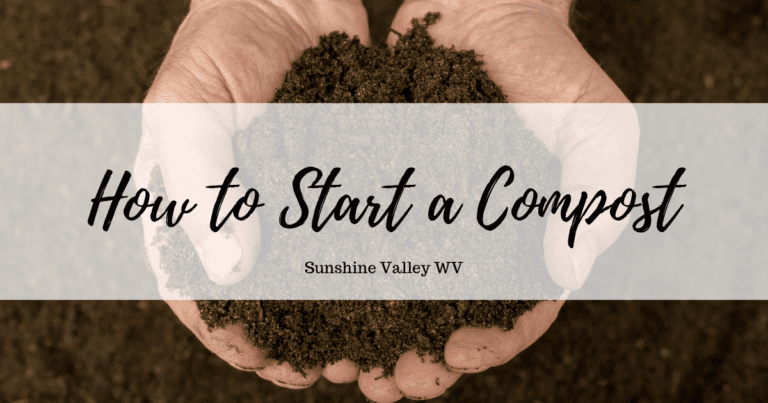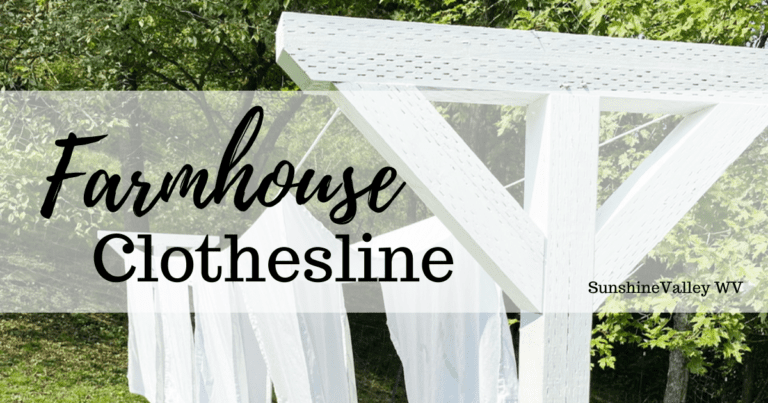How To Start a Homestead
Do you dream of growing your own food, creating your meals from scratch, and starting a homestead? You dream of the day you wake up to collect your own fresh eggs and have your coffee in the garden. Creating a sustainable life is deeply gratifying. If this sounds like you, read on. I am sharing a few tips on how to start a homestead from scratch.

Quick Start Guide to Starting a Homestead: From Concept to Reality
Starting a homestead is a dream for many who seek a more self-sufficient and sustainable lifestyle. The idea of growing your own food, raising livestock, and living in harmony with nature has a timeless appeal. However, the transition from urban or suburban living to homesteading can seem overwhelming. This guide offers a comprehensive step-by-step approach to help you start your homestead journey with confidence and clarity.

Why Start a Homestead?
Homesteading offers numerous benefits beyond the fresh produce and self-sufficiency it brings. Here are a few reasons why starting a homestead might be the right choice for you:
- Sustainability: Homesteading encourages a more sustainable way of life by reducing reliance on commercial food production and minimizing waste.
- Healthier Lifestyle: Growing your own food allows you to control what you consume, leading to a healthier diet with fewer additives and preservatives.
- Connection with Nature: Homesteading fosters a deeper connection with the natural world, promoting mindfulness and a sense of fulfillment.
- Community Building: Homesteaders often form close-knit communities, sharing knowledge, resources, and support.

Step 1: Define Your Homestead Vision
The first step in starting a homestead is defining your vision. This involves identifying your goals, values, and what you hope to achieve through homesteading. Consider the following:
1. Determine Your Homesteading Goals
Think about what aspects of homesteading appeal to you. Are you interested in growing your own food, raising animals, generating renewable energy, or living off-grid? Your goals will shape the direction of your homestead.
2. Establish a Timeline
Starting a homestead is a long-term commitment. Create a realistic timeline for achieving your goals, taking into account your current resources, skills, and budget. Remember, homesteading is a journey, not a sprint.
3. Assess Your Skills and Knowledge
Identify the skills you already possess and the ones you need to develop. Homesteading requires a range of skills, from gardening and animal husbandry to carpentry and basic mechanics. Make a list of the skills you need to learn and prioritize them based on your goals. I suggest having a few reliable homesteading books on hand. I especially like the Storey’s Guides to raising animals. They’re readily available online or in most tractor supply stores. YouTube is another valuable resource.
4. Decide on a Location
Your homestead’s location plays a critical role in its success. Consider factors like climate, soil quality, water sources, and proximity to markets or community resources. Decide whether you’ll start your homestead on existing property or if you’ll need to acquire land. By the way, one of the most common myths aspiring homesteaders believe is that you need acres and acres of land to homestead. If you live in the outskirts of town, you may be able to start homesteading right where you are. Just be sure to check your local ordinances before you bring home a rooster.

Step 2: Develop a Homestead Plan
With your vision in place, it’s time to develop a detailed plan. This plan will serve as a roadmap for building and maintaining your homestead.
1. Design Your Homestead Layout
Create a layout for your homestead that includes key elements like gardens, livestock areas, storage facilities, and living spaces. Consider the placement of these elements to maximize efficiency and minimize resource waste. Use software or graph paper to visualize your design. With the proper layout you can accomplish just about anything, even with a small plot of land.
2. Plan Your Garden
Gardening is a central aspect of homesteading. Plan your garden layout, including what crops you’ll grow, where you’ll plant them, and when to start planting. Consider using raised beds, container gardens, or traditional rows based on your space and soil quality.
Check out these Blog Posts:
- How To Prepare Your Garden for Planting
- FREE Printable Vintage Victory Garden Guide for Gardening Success
- How to Grow Garlic
3. Decide on Livestock
If you’re interested in raising livestock, determine which animals are suitable for your homestead. Popular choices include chickens for eggs, goats for milk, and rabbits for meat. Ensure you have the appropriate facilities and resources to care for your animals.
Helpful Hint:
Most places will allow you to have a rabbit as a pet. Their manure is an invaluable resource for your garden!
4. Develop a Resource Management Plan
Resource management is critical for a successful homestead. Plan how you’ll source water, manage waste, and generate energy. Consider sustainable practices like rainwater harvesting, composting, and solar energy.

Step 3: Build Your Homestead Infrastructure
Once you have a plan, it’s time to start building the infrastructure for your homestead. This step involves setting up the physical structures and systems that will support your homestead activities.
1. Construct Essential Structures
Start with the essential structures for your homestead, such as a barn, chicken coop, greenhouse, or garden beds. Use recycled or reclaimed materials when possible to reduce costs and environmental impact.
Helpful Hint:
Don’t overlook what’s already on your property. That old outbuilding could be fixed up a little to make a perfect chicken coop.
2. Install Water and Energy Systems
Ensure your homestead has a reliable water source. Consider digging a well, collecting rainwater, or tapping into a nearby water source. If you’re interested in renewable energy, explore options like solar panels or wind turbines.
3. Set Up Livestock Facilities
Build the necessary facilities for your livestock, ensuring they have adequate shelter, space, and fencing. Keep in mind the needs of different animals and create a safe and comfortable environment for them.
4. Create Storage and Workshop Spaces
Storage and workshop spaces are essential for storing tools, equipment, and supplies. Consider building a shed or a dedicated workshop where you can work on projects and store materials. Don’t forget to plan a good dry storage area for a year’s worth of hay!

Step 4: Start Homesteading
With your infrastructure in place, it’s time to start homesteading. This step involves putting your plan into action and beginning the daily tasks of a homesteader.
1. Plant Your Garden in the Spring
Begin planting your garden according to your plan. Start with easy-to-grow crops like tomatoes, lettuce, and herbs. Consider succession planting to ensure a steady harvest throughout the growing season.
2. Raise Your Livestock
Introduce your livestock to their new facilities and establish a routine for feeding, cleaning, and care. Learn about the specific needs of each animal and monitor their health regularly.
- A Beginners Guide to Raising Chickens: Simple Tips for Raising Chickens
- Top 5 Best Egg Laying Chicken Breeds
3. Implement Sustainable Practices
Homesteading is rooted in sustainability. Implement practices like composting, recycling, and energy conservation to minimize waste and reduce your homestead’s environmental impact.
4. Build Community Connections
Homesteading can be a solitary endeavor, but building connections with other homesteaders and local communities can be beneficial. Join homesteading groups, attend farmers’ markets, or participate in community events to share knowledge and resources.
Are you ready to start?
Starting a homestead is a fulfilling journey that offers a path to sustainability, self-sufficiency, and a deeper connection with nature. By following this quick start guide, you can lay the foundation for a successful homestead and begin enjoying the rewards of homesteading. Define your vision, develop a plan, build the necessary infrastructure, and start your homesteading activities. Remember, homesteading is a continuous learning process, so embrace the challenges and celebrate the successes as you work toward a simpler, more sustainable way of life.

Here’s an image to pin for later…







